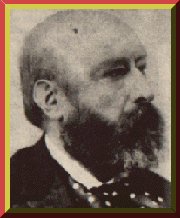PABLO CASALS SCRAPBOOK (Page Four)
Pablo Casals took formal cello instruction for only three years. He began studying with Jose Garcia at the Barcelona College of Music when he was twelve years old. At the age of fifteen he was well on his way to becoming the master of his instrument, and could learn no more from Garcia. Garcia was a good cellist, with a beautiful tone, accurate intonation and musical taste; but Casals was moving in a new direction. Casals, even in his early teens, was beginning to revolutionize the art of the cello. He wanted to get rid of all the unnecessary conventions and stiffness of the mode of performance of that time. Students then were taught to play with stiff right arms, even obliged to hold books in their armpits as they practiced. Casals advocated complete freedom of movement in the bow arm, including the elbow, making the whole bow technique stronger and easier. He was also already revising the traditional method of fingering, and the action of the left hand, seeking a natural way of playing. All contemporary cellists are walking in the footsteps, or at least beside the footsteps, of Casals, footsteps that he began making over a hundred years ago.
 Count Morphy Count Morphy | Casals had no other cello teachers than his father, Garcia, and himself. However, he did continue to study composition and chamber music. The Spanish composer Albeniz had become a close friend to Pablo and his family, and had been urging him to go to London to continue his studies on the cello. But Pablo's mother was not willing to allow him to travel so far away, alone, at the age of fifteen. Arrangements were made for Casals to travel to Madrid, accompanied by his mother. Casal's cello teacher Garcia was sure that in Madrid sufficient interest in Pablo would be aroused to secure him a governmental scholarship for study abroad. Albeniz gave Pablo a letter of introduction to the Count of Morphy, who was the private secretary to King Alfonso XII. It has been said that "...talent makes a way for itself." But it is also true that often, "...it is not what you know, but whom you know" that gets a person ahead in life. Both of these principles are evident in Casal's career.
|
Count Morphy liked Casals very much. He was a lover of fine music, and realized immediately that Pablo had the mark of greatness on him. Count Morphy arranged for Pablo to perform at the Royal Palace, and to study music at the Madrid Conservatory. The Count and Casals became close friends. He considered himself to be a "second father" to Pablo, and they remained in touch with one another until the Count died in 1900 in Switzerland.
Casals lived in Madrid for two years, studying counterpoint with Tomas Breton; and chamber music with a violinist, the celebrated Jesus de Monasterio, who was also the Director of the Madrid Conservatory. Breton was a leading Spanish composer, and had written the first genuinely Spanish opera. Count Morphy hoped that Casals would become another great Spanish composer, rather than a world famous cellist. In fact, he arranged for the Queen to give Casals a allowance that would enable him to continue his studies in composition, both in Madrid, and later in Brussels. Monasterio was an excellent teacher, and emphasized intonation and proper accentuation in chamber music performance. Casals grew musically under the influence of both these fine musicians. During these years he was taught privately by Count Morphy in the areas of art, philosophy and mathematics. The Count exerted a profound and lasting influence on the character of the young man.
After Pablo received the allowance from the Queen of Spain, his mother took him to Belgium by train, to the Brussels Conservatory, considered then to be the center of the finest string playing in the world. A remarkable incident occured there that is quite revealing about Casal's precocity on the cello, and about his strong personality.
Copyright © 1996, 1997 Marshall C. St. John

SCRAPBOOK FRONT PAGE
